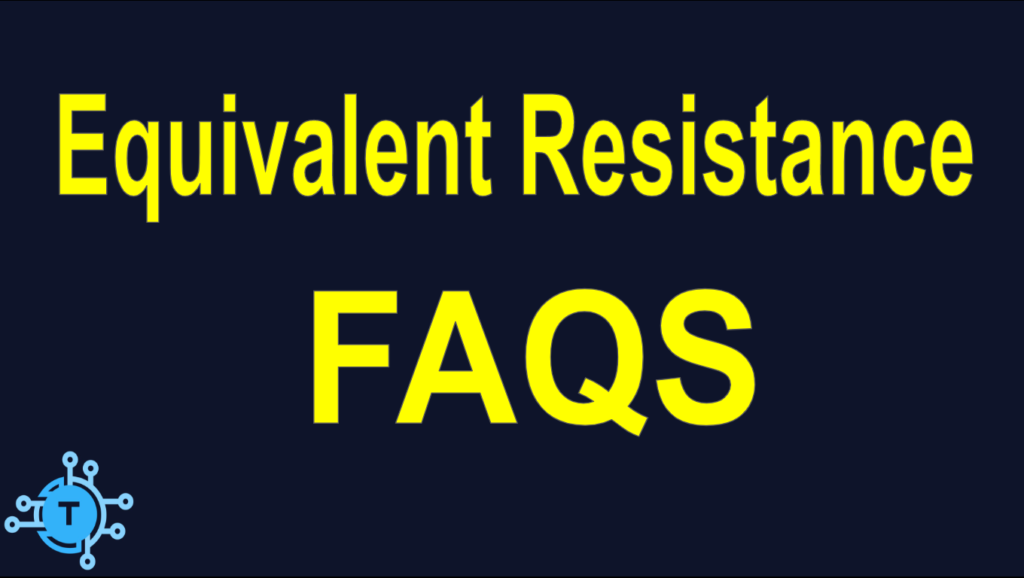
Frequently Asked Questions about Equivalent Resistance is another in a series of FAQS about electricity and electronics that are oriented toward Appliance Technicians and HVAC Technicians.
Frequently Asked Questions about Equivalent Resistance
Q. What is the equivalent resistance of two resistors in series?
A. It is the sum of the two resistors’ values.
Q. What is the equivalent resistance of three or more resistors in series?
A. It is the sum of all resistors’ values.
Q. What is true about resistors in parallel?
A. The equivalent resistance is always less than the lowest value resistor.
Q. What is a shortcut for determining the equivalent resistance of two parallel resistors?
A. If you have two resistors of the same value in parallel, the equivalent resistance is equal to 1/2 of the value of each resistor. For example, if you have (2) 10 ohm resistors in parallel, the equivalent resistance is 5 ohms.
Q. What is a shortcut for determining the equivalent resistance of three parallel resistors?
A. If you have three resistors of the same value in parallel, the equivalent resistance is equal to 1/3 of the value of each resistor. For example, if you have (3) 10 ohm resistors in parallel, the equivalent resistance is 3.33 ohms.
Q. What is a formula for determining the equivalent resistance of two parallel resistors?
A. You can use the product over the sum or R(equivalent)=(R1xR2)/(R1+R2). For example, the equivalent resistance of a 6 and 12 ohm resistor in parallel would be (6×12)/(6+12) = 72/18 = 4 ohms. Note that the final resistance is lower than the lowest resistance value as stated in a previous FAQ.
Q. What is a formula for determining the equivalent resistance of three or more parallel resistors?
A. You should use the reciprocal formula or 1/R(equivalent)=1/R1+1/R2+1/R3+1/Rn, where n is the value of the last resistor in parallel. For example, the equivalent resistance of a 10, 20, and 20 ohm resistor in parallel would be 1/R(equivalent) = 1/10 + 1/20 + 1/20 = 1/10 + 2/20 = 1/10 + 1/10 = 2/10 = 1/5. Thus 1/(1/5) = 5 ohms. Note again that the final resistance is lower than the lowest resistance value as stated in a previous FAQ.
Q. What if there are series and parallel resistances in a circuit?
A. Calculate the equivalent resistance of the parallel arrangements first, then add them to the string of series resistances to find the total circuit resistance.
To donate to the Tech Circuit – CLICK HERE
For additional electrical and electronics learning material for field techs, visit our homepage at http://www.TechCircuit.org or our Facebook group at https://www.facebook.com/groups/746823709133603 or our YouTube Channel
at https://www.youtube.com/@TheTechCircuit
TC
We are a participant in the Amazon Services LLC Associates Program, an affiliate advertising program designed to provide a means for us to earn fees by linking to Amazon.com and affiliated sites.
